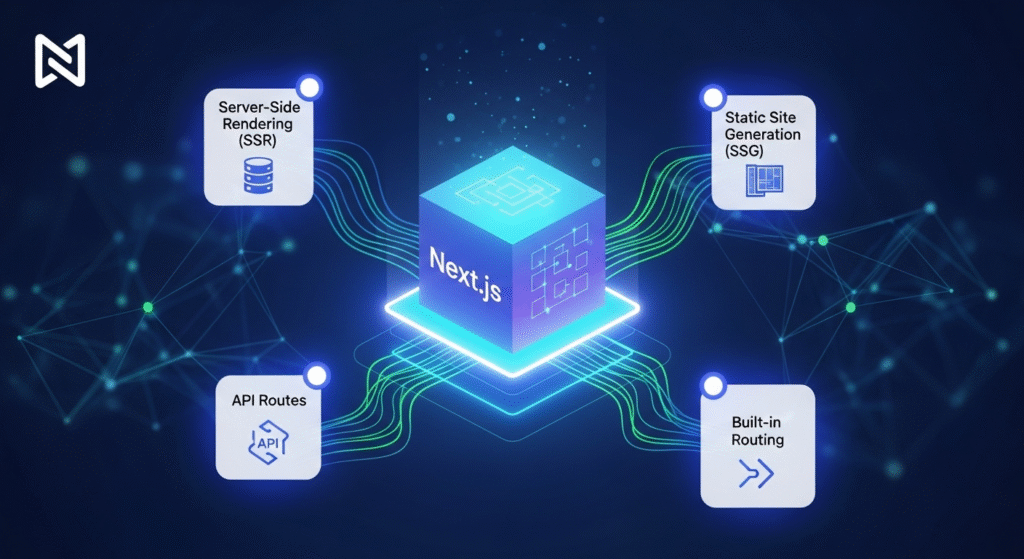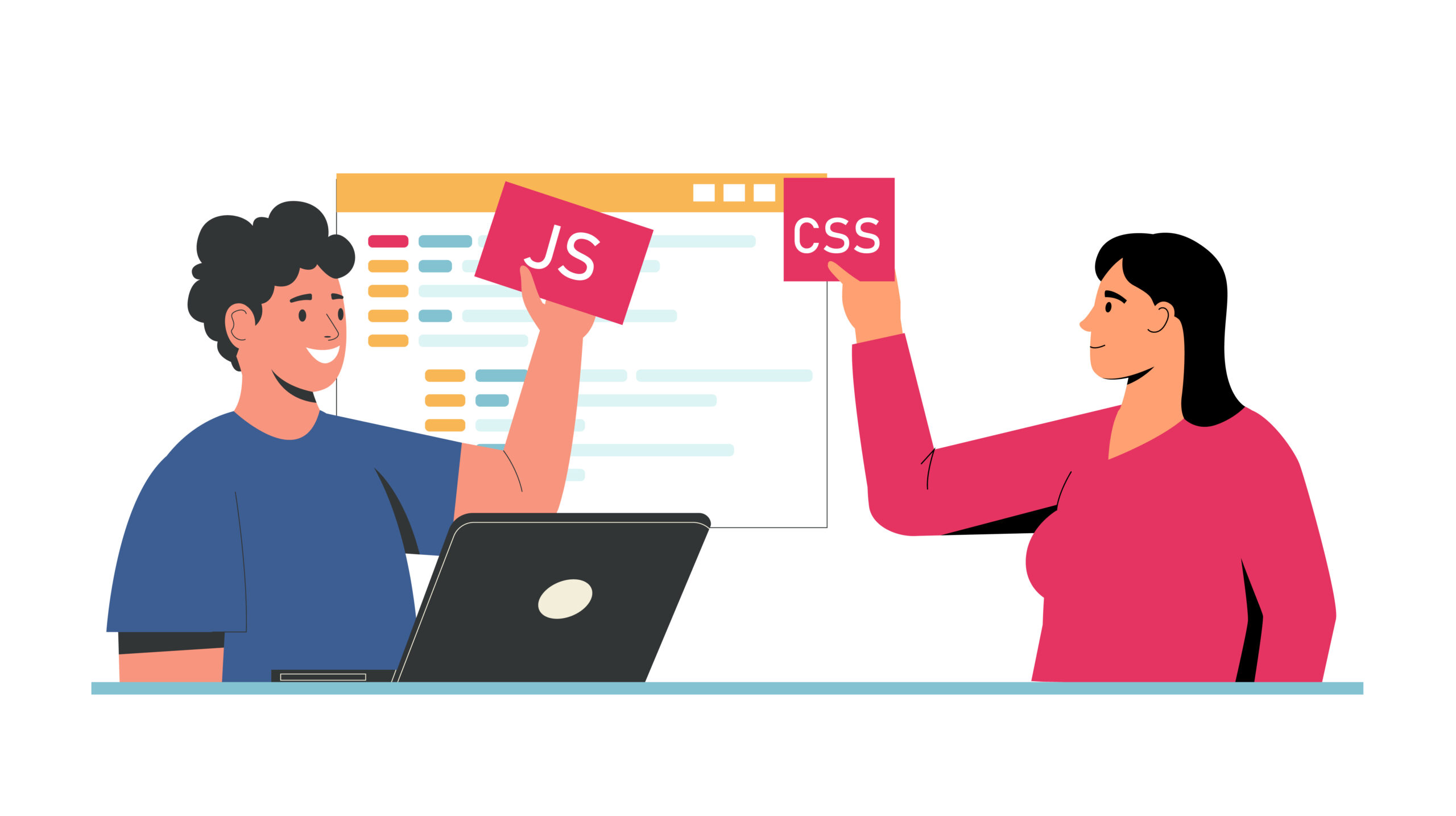In the ever-evolving world of web development, choosing the right framework or library can make or break your project. React has long been a dominant player in the front-end ecosystem, but the React-based framework has been gaining significant traction in recent years. As we look ahead to 2025, the question arises: Why should you choose Next.js over React? In this article, we’ll explore the key differences between the full-stack React framework and React, the advantages of Next.js, and why it might be the better choice for your projects in 2025.
What is React?
React is a JavaScript library developed by Facebook for building user interfaces. It allows developers to create reusable UI components and manage the state of their applications efficiently. React is known for its flexibility, performance, and a vast ecosystem of tools and libraries. However, React is primarily a library for building UIs, meaning it doesn’t provide built-in solutions for routing, server-side rendering (SSR), or static site generation (SSG).


What is Next.js?
Next.js is a React framework developed by Vercel that builds on top of React to provide a more comprehensive solution for building modern web applications. It includes features like server-side rendering, static site generation, API routes, and built-in routing, making it a full-stack framework. The React-powered framework is designed to simplify the development process while improving performance and SEO.


Key Differences Between React and Next.js
- Server-Side Rendering (SSR) and Static Site Generation (SSG)
React: React is a client-side rendering (CSR) library by default. While you can implement SSR or SSG with additional tools like React Router or Gatsby, it requires extra configuration and setup.
Next.js: The SSR-ready framework natively supports SSR and SSG out of the box. This makes it easier to build fast, SEO-friendly websites and applications without additional dependencies.
- Routing
React: React doesn’t include a built-in routing system. Developers typically rely on third-party libraries like React Router for client-side routing.
Next.js: The SEO-friendly framework has a file-based routing system, where pages are automatically routed based on their file structure in the pages directory. This eliminates the need for additional routing libraries.
- API Routes
React: React doesn’t provide a built-in solution for creating APIs. Developers often use separate backend frameworks like Express or Node.js.
Next.js: The performance-focused framework includes API routes, allowing you to create backend endpoints directly within your Next.js application. This simplifies the development process by unifying the frontend and backend.
- Performance
React: While React is highly performant, its reliance on client-side rendering can lead to slower initial page loads, especially for large applications.
Next.js: The Vercel’s framework optimizes performance through SSR, SSG, and automatic code splitting. This results in faster page loads and better user experiences.
- SEO
React: CSR applications can struggle with SEO because search engines may have difficulty indexing content rendered on the client side.
Next.js: The modern web framework improves SEO by rendering pages on the server or generating them statically, ensuring that content is easily indexable by search engines.
Why Choose Next.js in 2025?
- Enhanced Performance
Performance is a critical factor in user experience and search engine rankings. Next.js’s support for SSR and SSG ensures that your application loads quickly, even for users with slower internet connections. In 2025, as web applications become more complex and data-heavy, the React-based framework’s performance optimizations will be a significant advantage.
- Improved SEO
Search engine optimization (SEO) is essential for driving organic traffic to your website. Next.js’s ability to pre-render pages on the server or generate them statically ensures that your content is easily indexable by search engines. This is particularly important in 2025, as search engines continue to prioritize fast, user-friendly websites.
- Simplified Development
Next.js simplifies the development process by providing built-in solutions for routing, API creation, and performance optimization. This reduces the need for additional libraries and tools, allowing developers to focus on building features rather than configuring their environment. In 2025, as development teams look for ways to streamline workflows, the full-stack React framework will be an attractive option.
- Full-Stack Capabilities
Next.js’s API routes enable developers to build full-stack applications without needing a separate backend. This is particularly useful for small to medium-sized projects where simplicity and speed are priorities. In 2025, as more developers adopt full-stack development practices, the performance-focused framework will continue to grow in popularity.
- Built-In Image Optimization
Next.js includes an <Image> component that automatically optimizes images for performance. This is crucial in 2025, as high-quality images and media become more prevalent on the web. By reducing image load times, the React-powered framework helps improve overall page performance.
- Incremental Static Regeneration (ISR)
Next.js introduced Incremental Static Regeneration (ISR), which allows you to update static pages without rebuilding the entire site. This is particularly useful for large websites with frequently changing content. In 2025, as websites grow in size and complexity, ISR will be a game-changer for maintaining performance and scalability.
- Strong Community and Ecosystem
Next.js has a rapidly growing community and ecosystem, with extensive documentation, tutorials, and third-party integrations. In 2025, this ecosystem will continue to expand, making it easier for developers to find solutions and resources.
- Future-Proof Technology
Next.js is built on top of React, meaning it benefits from React’s ongoing development and updates. By choosing the modern web framework, you’re investing in a framework that is both cutting-edge and future-proof. In 2025, as React continues to evolve, Next.js will remain at the forefront of web development.
When to Choose React Over Next.js
While the React-based framework offers many advantages, there are still scenarios where React might be the better choice:
- Small Projects: For small, single-page applications (SPAs) with minimal routing and SEO requirements, React’s simplicity might be sufficient.
- Custom Configurations: If you need complete control over your project’s architecture and configuration, React’s flexibility might be more appealing.
- Existing React Projects: If you’re working on an existing React project, migrating to Next.js might not be worth the effort unless you need its advanced features.
Conclusion: Why Next.js is the Future
As we look ahead to 2025, Next.js is poised to become the go-to framework for modern web development. Its built-in features, performance optimizations, and full-stack capabilities make it a powerful tool for building fast, scalable, and SEO-friendly applications. While React remains a versatile and widely-used library, the full-stack React framework builds on its strengths to provide a more comprehensive solution.
If you’re starting a new project or looking to modernize an existing one, Next.js is a future-proof choice that will help you stay ahead in the competitive world of web development. By choosing the React-powered framework, you’re not just adopting a framework you’re embracing a more efficient, performant, and developer-friendly way to build the web.



